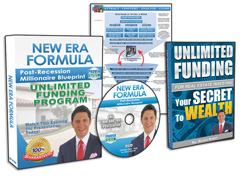
 It’s a fact: real estate investors who do their homework tend to be more successful, earning higher returns more quickly and more consistently than “swing and miss” investors.
It’s a fact: real estate investors who do their homework tend to be more successful, earning higher returns more quickly and more consistently than “swing and miss” investors.
While the market changes constantly, it’s important to remember that real estate markets are largely cyclical. This means it’s very possible to glean some valuable information by looking at historical data. Start by analyzing price changes from the last few years to track any obvious patterns, then get down to studying the nitty gritty details of what’s going on with the local economy. Next, capitalize on momentum where you can find it
The ebb and flow of market values and pricing can be attributed to many influencing factors. Watch the following closely in order to develop a solid understanding of any market’s temperature.
Socioeconomics
By analyzing the demographics and income levels within the community you plan to invest in, you can better anticipate whether the market is set to heat up or cool down.
For example, if mean household income in the area has been steadily increasing for a few years, odds are that a lot of people will be looking to purchase new homes in the neighborhood soon. Unemployment getting higher? Count on a chilling effect on real estate purchasing activity, though the market may be ripe for you to invest in some foreclosures or short sales. An influx of younger or wealthier residents moving in can also heat up the market for investors – though they may be looking for highly specialized properties, so it’s vital to keep up with the changing wants and needs of the community in which you plan to invest.
Tax & Policy
Keeping abreast of real estate tax and policy news may not be your idea of fun and excitement, but it’s imperative for investors to understand. New taxes, laws and subsidies are constantly being added on the local, state and federal levels, which can greatly influence real estate purchasing trends.
One recent and dramatic example of incentive policy influencing the market is the implementation of the first-time homebuyer’s tax credit in 2009. Meant to boost the real estate economy only for a short time after the Great Recession, the effort was successful and helped create more than 900,000 new home buyers over the next year. While this may not happen again, it’s always beneficial to follow local, state and federal housing policy in order to improve your real estate investment returns.
Saturation
How many total home or office properties comprise the market’s inventory right now? What’s the number of these properties that are currently available for sale? Property saturation is potentially the most effective predictor of how strong investments in a market will be.
Investing in areas with many new homes available for sale may leave you struggling to make your investment stand out among the rest. On the other hand, investors can see huge returns by scoring a fantastic property in a location that’s in high demand. Luckily, it often just takes a little time and observation to determine the right environment to buy or sell in.
This is not meant to be an exhaustive list of influential factors. However, they do provide a useful index as far as what to look for when entering a new market for the first time, or reevaluating your current investment portfolio.
Request FREE Funding Kit and Discover How To Legally Bypass Banks And Gain Direct Access To "No-Credit-Required" Funding You Can Use To Achieve Your Financial Freedom... Start Now!












